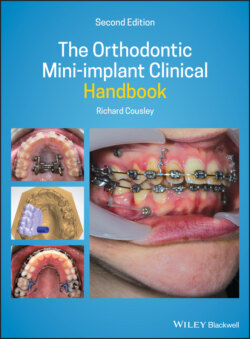Читать книгу The Orthodontic Mini-implant Clinical Handbook - Richard Cousley - Страница 33
2 Maximising Mini‐implant Success: Patient (Anatomical) Factors
ОглавлениеThe influences on mini‐implant success rates are generally subdivided into three categories: patient, mini‐implant (design), and technique factors. These will be discussed accordingly in this book, beginning with patient factors in this chapter.
Patient factors may be subdivided as:
macro – somatic and general patient factors
mini – insertion site anatomy
micro – bone characteristics.
There is now a consensus in the literature that mini‐implant success tends to be unaffected by patient gender, anteroposterior (Class I, II, or III) skeletal relationship, dental crowding, periodontal, and temporomandibular status. Therefore, these factors will not be discussed in detail. Having said that, my clinical experience is that gender may have an indirect influence in individual cases in terms of male–female variations in bone characteristics since these factors clearly do affect stability.
The basis and clinical consequences of these bone influences are summarised below. However, it's first worth defining some of the relevant terminology.
Primary stability – the initial support for the mini‐implant, due to its physical engagement in the cortical and cancellous bone. This is clinically reflected by the final insertion torque. Its influence reduces over several weeks as secondary stability supersedes it.
Secondary stability – the long‐term bone support for the mini‐implant. This is due to (reactive) bone remodelling around the mini‐implant body. On one hand, bone resorption leads to a loss of primary stability, whilst emerging bone deposition increases the secondary stability.
Torque – measured in Newton centimetres (Ncm – the same Sir Isaac Newton who described the fundamentals of anchorage in his third Law). Insertion torque is the rotational resistance to a mini‐implant being wound into the bone. A manual screwdriver readily reflects this in terms of how easy or difficult it is to turn/rotate the screwdriver: low forces mean low primary stability, while high forces indicate high primary stability. Some mini‐implant handpieces give a digital read‐out of the torque, or allow the orthodontist to set the maximum insertion torque.
